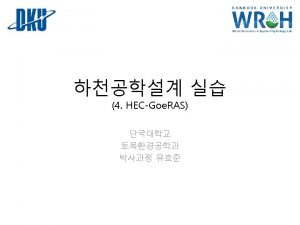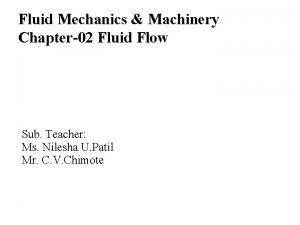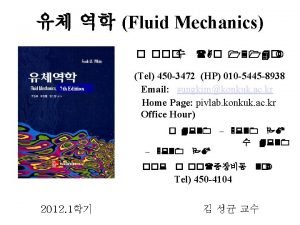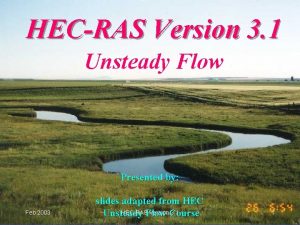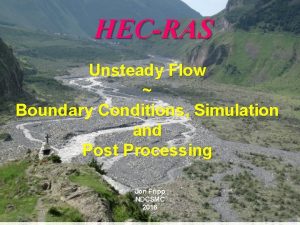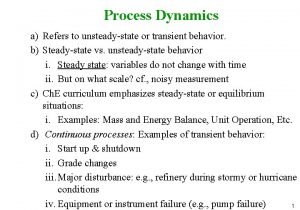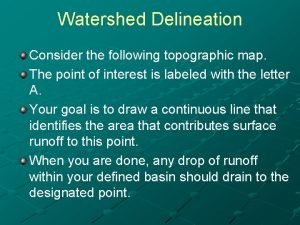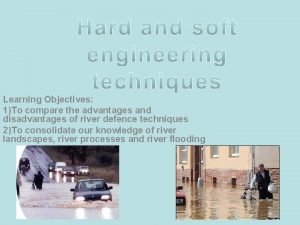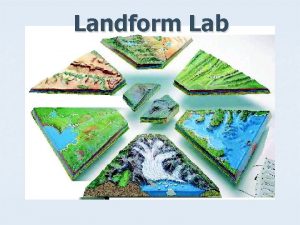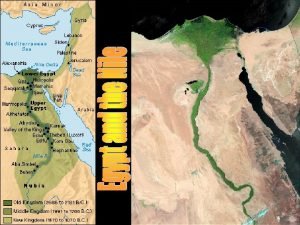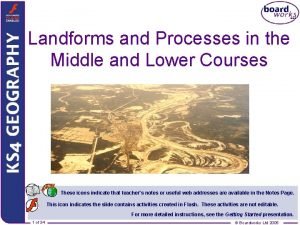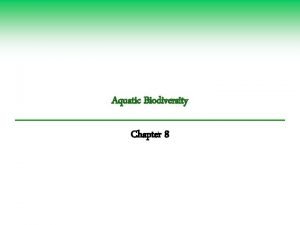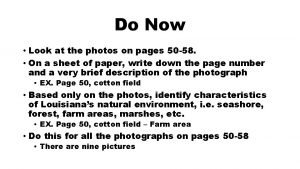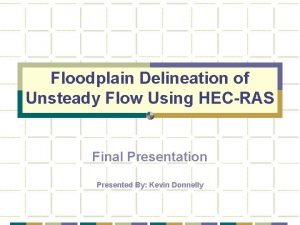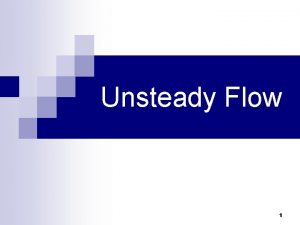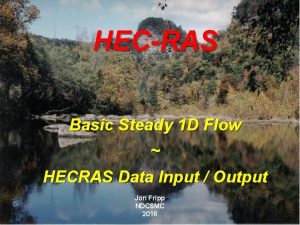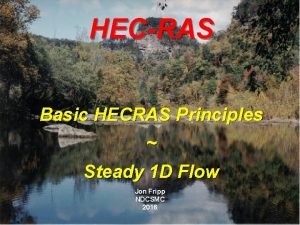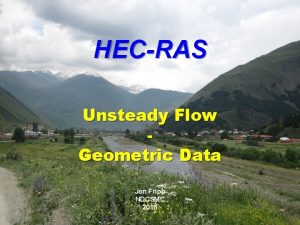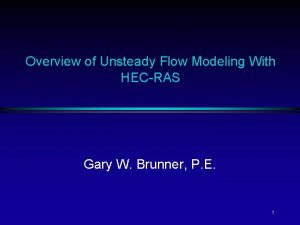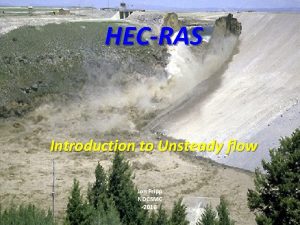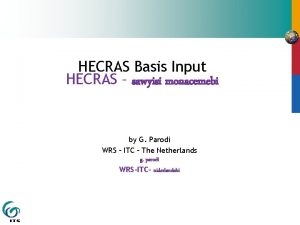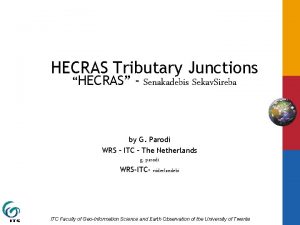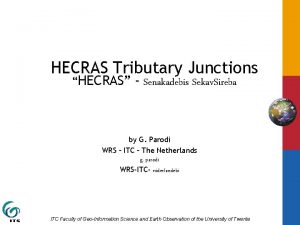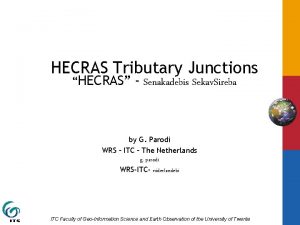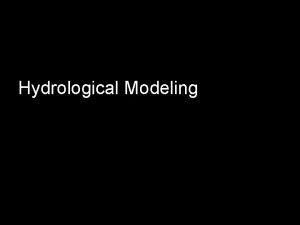Floodplain Delineation of Unsteady Flow Using HECRAS Final



















- Slides: 19

Floodplain Delineation of Unsteady Flow Using HEC-RAS Final Presentation Presented By: Kevin Donnelly

Study Area The Colorado River between Wirtz Dam and Inks Dam (Lake LBJ) and its two major tributaries, Sandy Creek and the Llano River Lake LBJ is 21. 15 miles long and 10, 800 feet wide at its widest point. The lake covers 6, 375 acres, and its capacity is 138, 500 acre-feet. Inks Dam

Objectives Develop a terrain model combining 30 -meter DEM data, 2 -foot contours, and UNET cross sections Develop new cross sections along the Colorado River (Lake LBJ), Llano River, and Sandy Creek using Geo. RAS Simulate flooding that occurred in November 2000 Import resulting water surface profiles back into GIS were the spatial extent of the flooding can be better seen and understood

Aligning Cross Sections UNET Cross Section HEC-RAS

TIN Input Data

Adjusting Cross Sections • Interpolate cross sections (500 ft) in HEC-RAS • Use Generate Report function to export cross sections to GIS • Create 3 D XS using Arc. View scripts developed by Eric Tate • Erase cross section points outside of the channel from interpolated cross sections • Form polygon outlining cross sections Where 2 -foot contours are available (Colorado River) • Convert 30 -meter DEM to points • Select grid-points within 30 -meters of 2 -foot contours • Select grid-points that intersect XS bounding polygon • Erase selected grid-points

Adjusting Cross Sections Where 2 -ft contours are not available • Buffer cross section bounding polygon • Clip DEM to buffered polygon • Resample cross sections using Eric Tate’s scripts • Cross section points within the channel remain unchanged • The elevation of the DEM at the end of each cross section and the cross section elevation at the channel bank is determined • The cross section elevation of each point outside the channel is adjusted to create a smooth transition between the original cross section and the DEM


Combining TIN Inputs

TIN Creation

Developing GIS Data

Unsteady Flow Data from DSS

HEC-RAS Results

Geo. RAS Results

Problems/Limitations • TIN is very large (~ 5 million triangles), Geo. RAS requires < 100, 000 cells to delineate floodplain • Floodplain was delineated using 30 -foot cells • Channels are filled-in in areas away from cross sections, forming humps in the TIN • Incorrect water depths and gaps in floodplain delineation • Did not affect RAS calculations, but limited where cross sections could be cut • Too many points in cross section created using Geo. RAS (> 400) • Not enough cross sections to correctly delineate floodplain • Floodplains are delineated for each time step separately

TIN Anomalies

Not Enough Cross Sections

Solutions • Interpolate cross sections to a much smaller maximum separation ~ 50’ • Utilize export channel only option in HEC-RAS • Create a cross section TIN, convert to grid, then points and use as point elevations for larger TIN • Use Cross Section Points Filter to reduce number of point below 400 • Break up reaches, delineating individual portions of the floodplains, and then merge them together

Questions kevin@mail. utexas. edu
 Hec-ras download army
Hec-ras download army Limitations of bernoulli's theorem
Limitations of bernoulli's theorem Fluid
Fluid Steady vs unsteady flow hec-ras
Steady vs unsteady flow hec-ras Hec-ras boundary condition
Hec-ras boundary condition Contoh aliran steady dan unsteady
Contoh aliran steady dan unsteady Unsteady-state process examples
Unsteady-state process examples Weak and unsteady
Weak and unsteady Topographic map watershed delineation
Topographic map watershed delineation Types of regionalization
Types of regionalization Watershed delineation pdf
Watershed delineation pdf Lpstp
Lpstp Flood walls advantages and disadvantages
Flood walls advantages and disadvantages Is a oxbow lake constructive or destructive
Is a oxbow lake constructive or destructive Nile floodplain
Nile floodplain How is a floodplain formed
How is a floodplain formed Source zone transition zone and floodplain zone
Source zone transition zone and floodplain zone Parishes of the mississippi floodplain region
Parishes of the mississippi floodplain region Mesopotamia floodplain
Mesopotamia floodplain Nile floodplain
Nile floodplain
